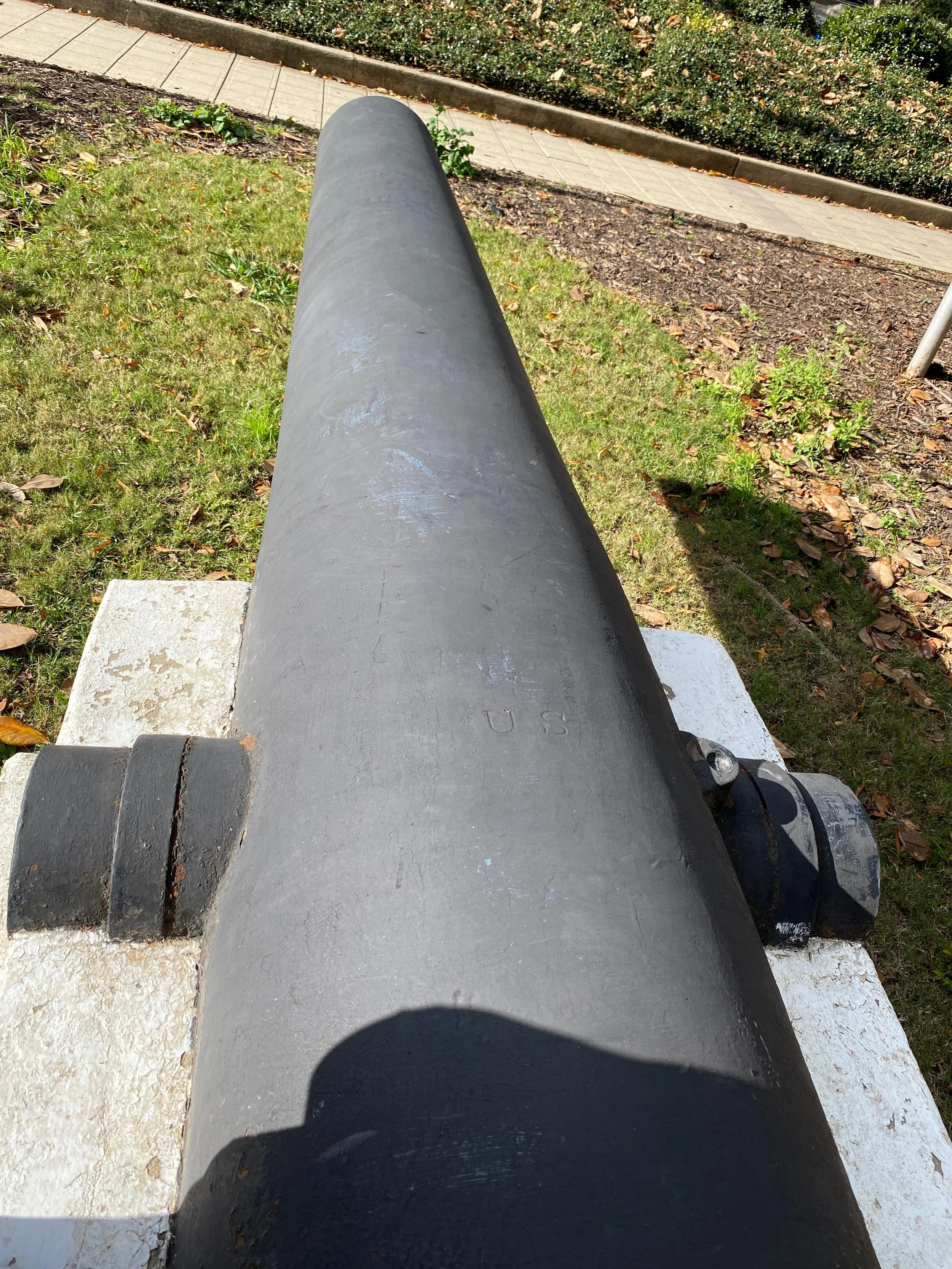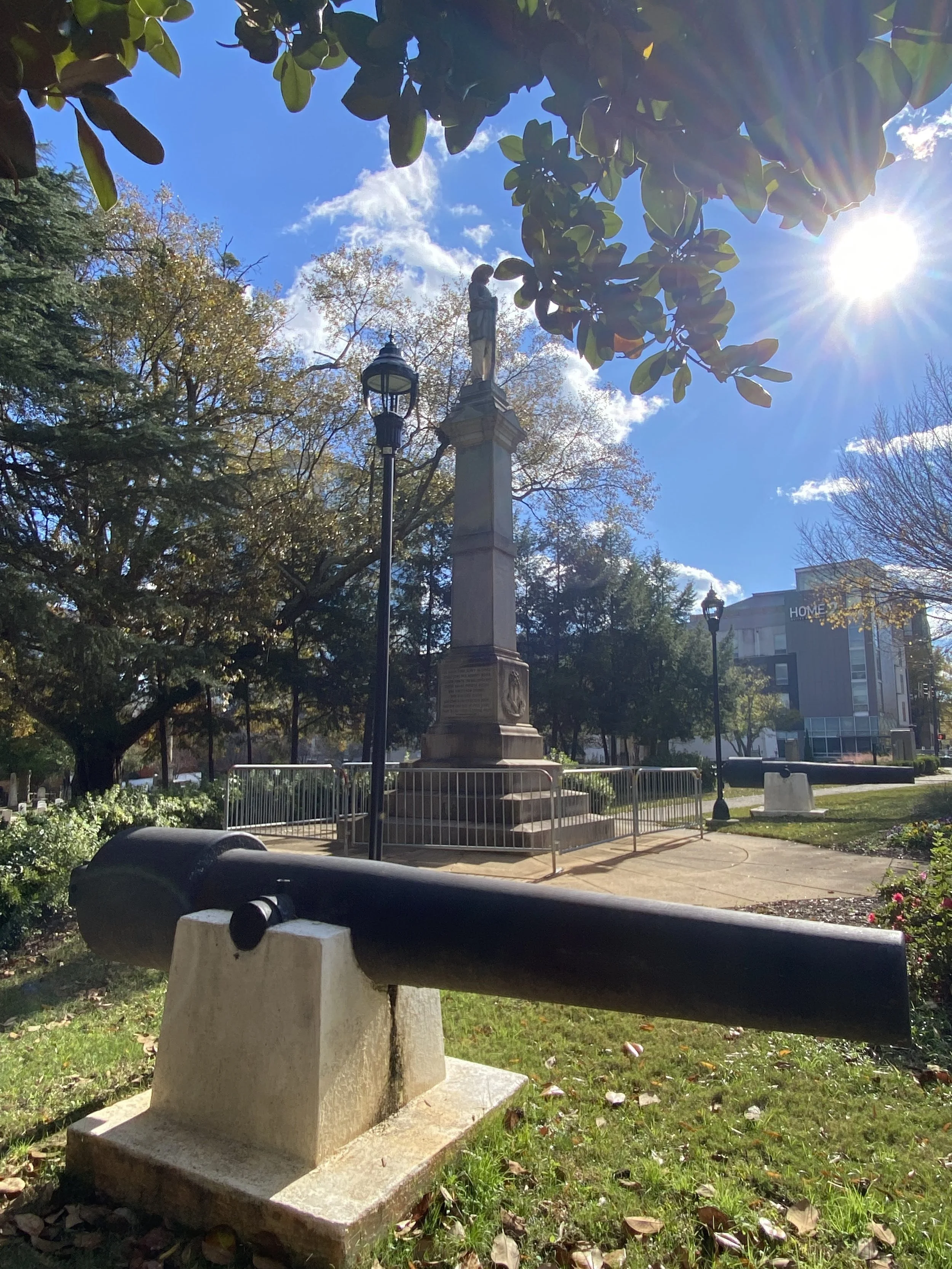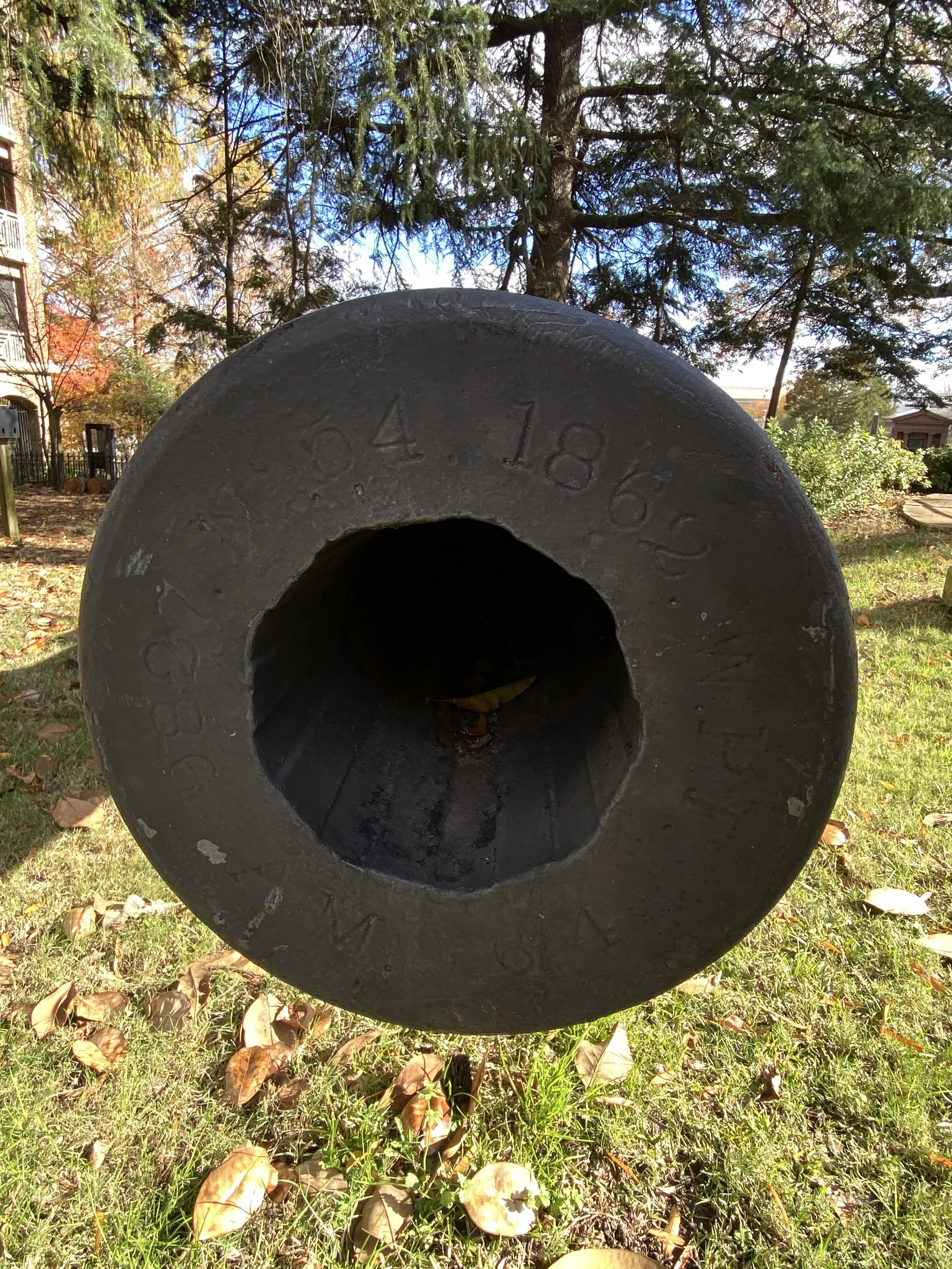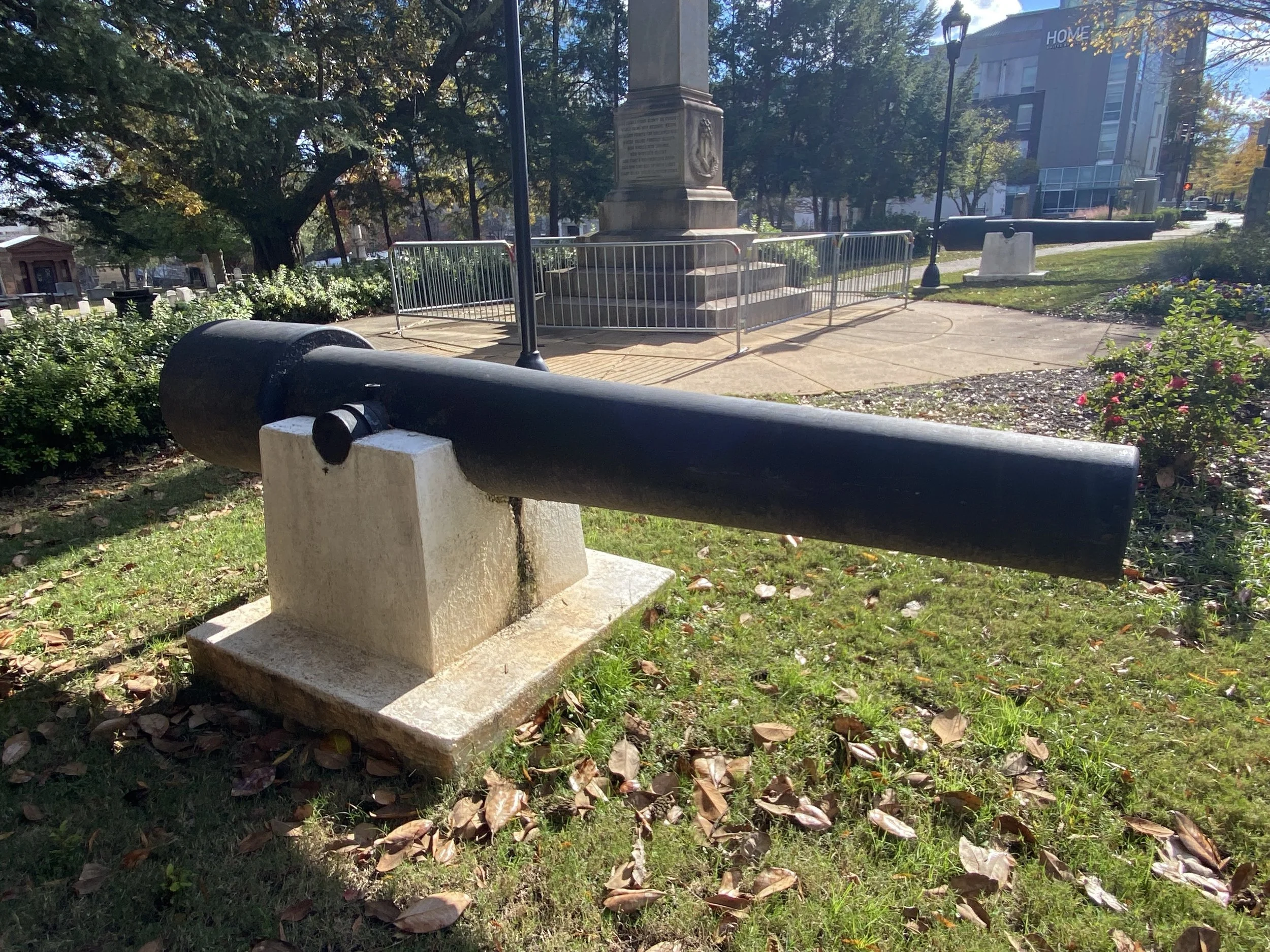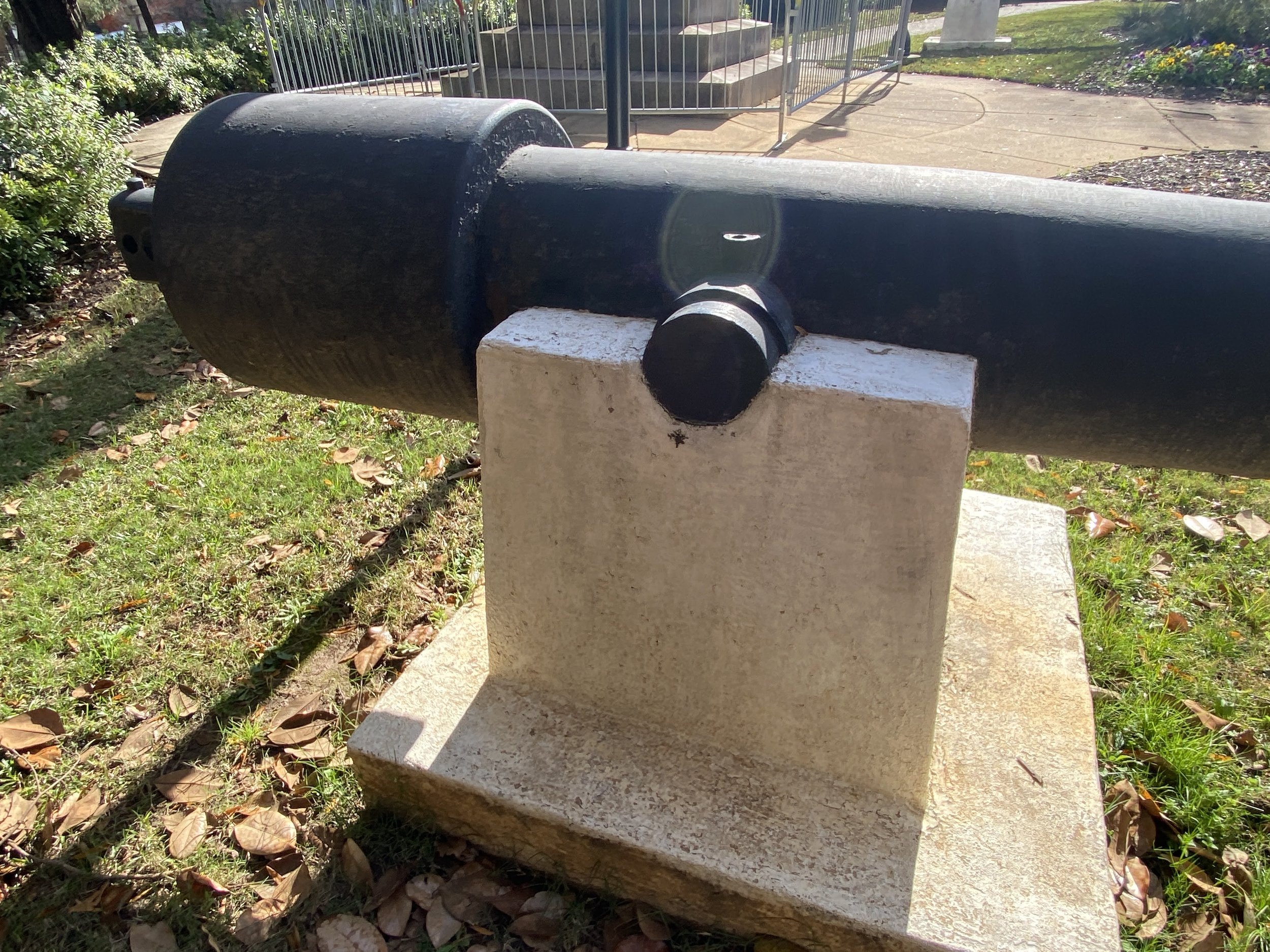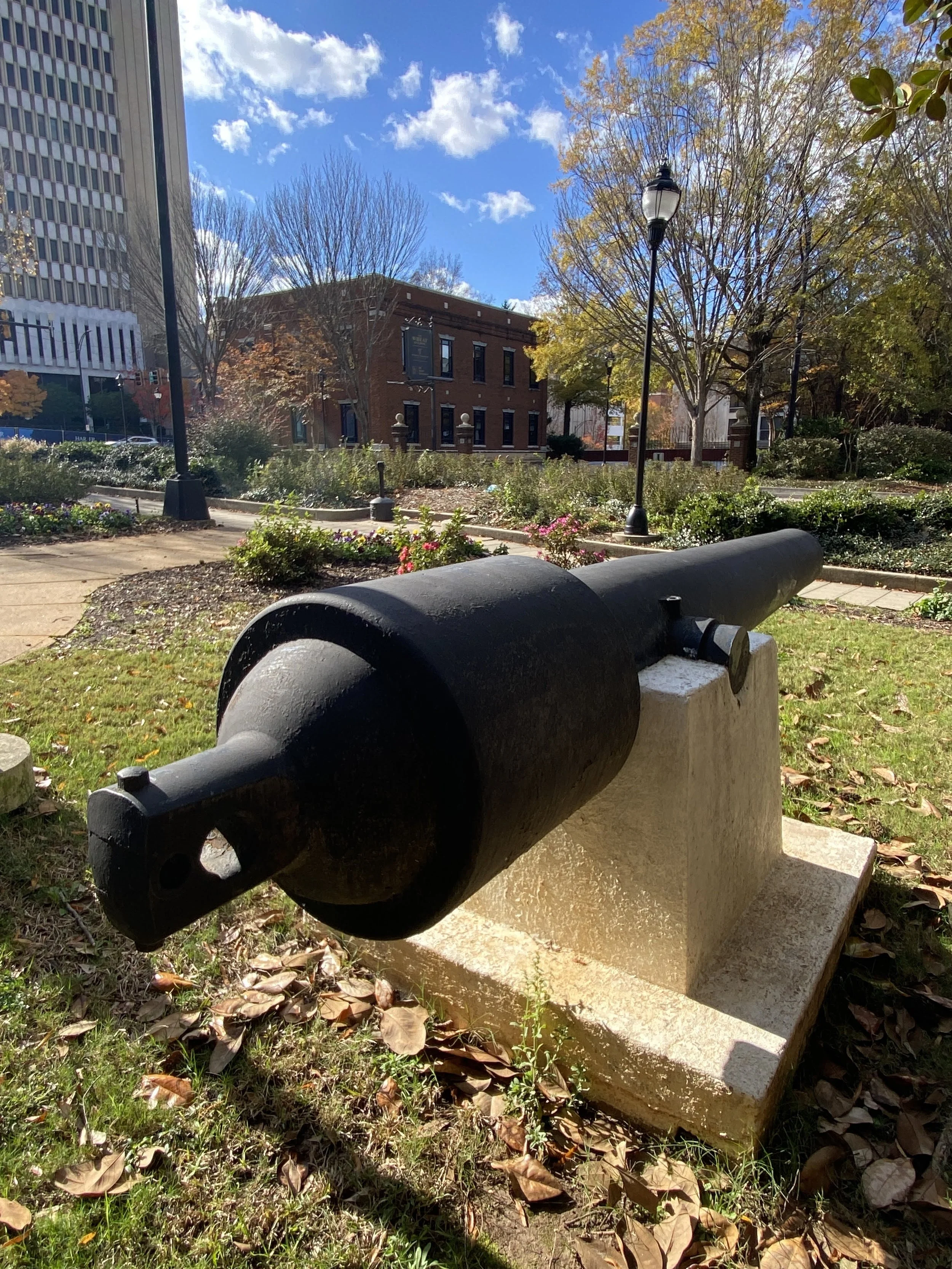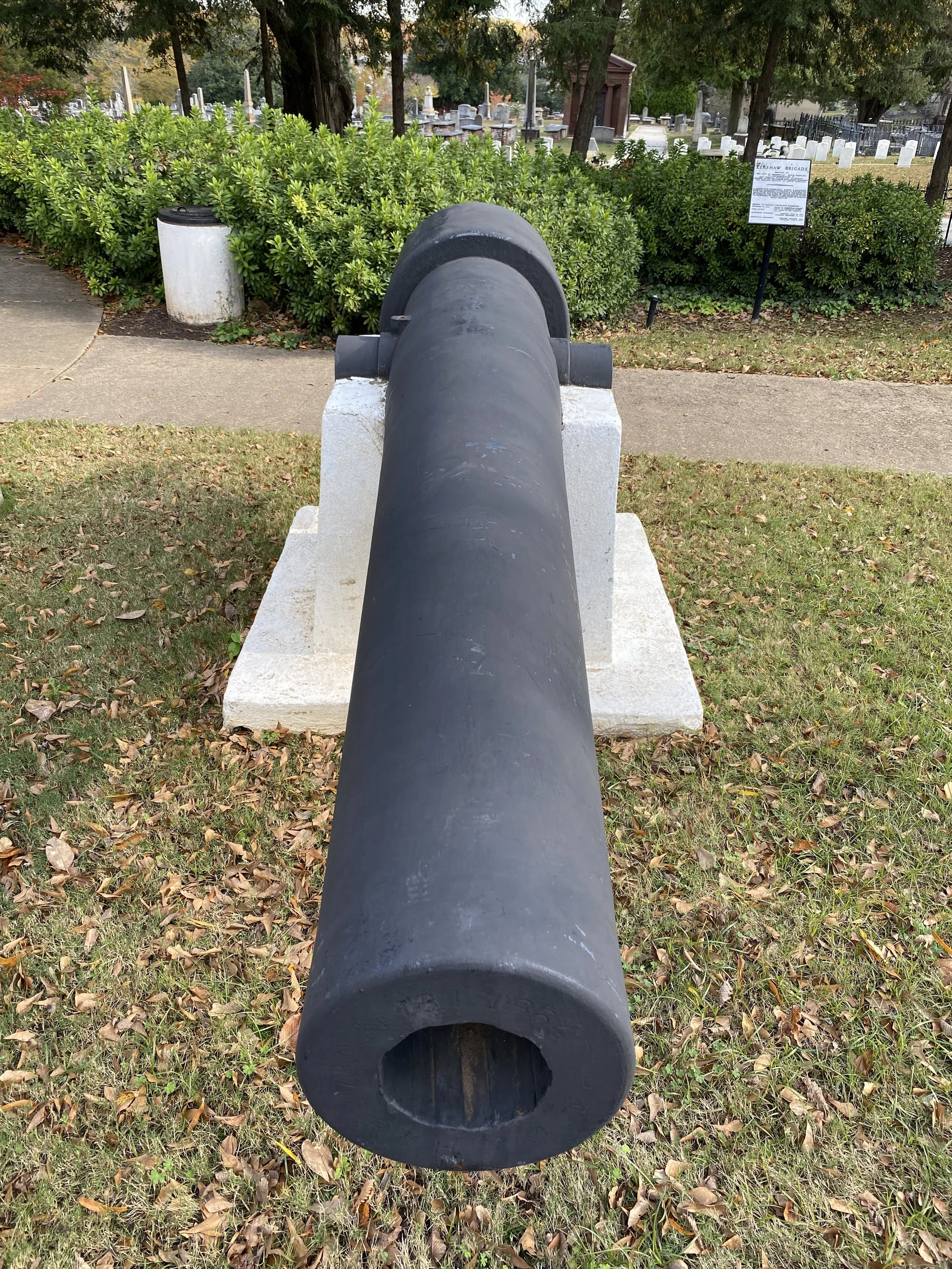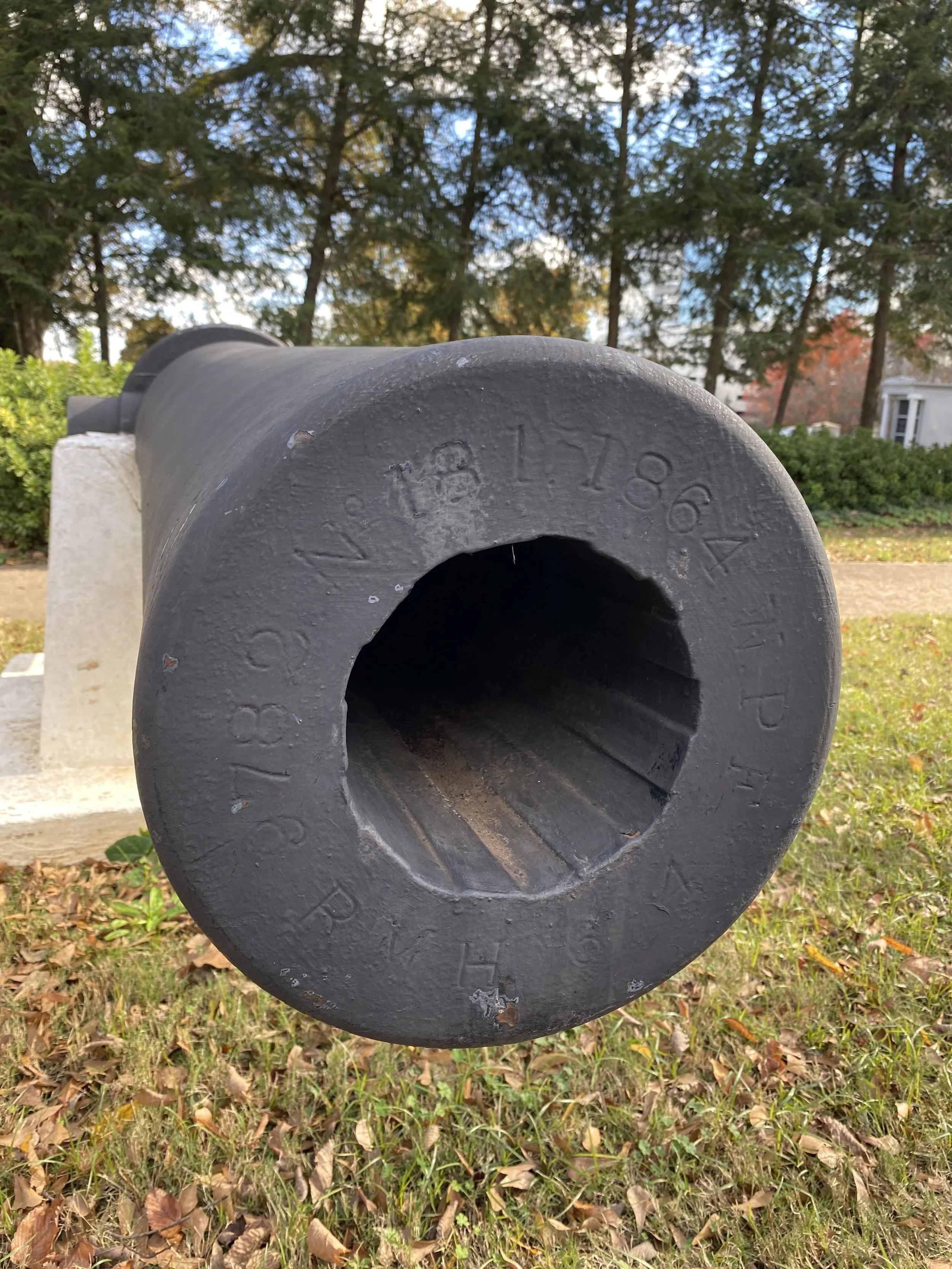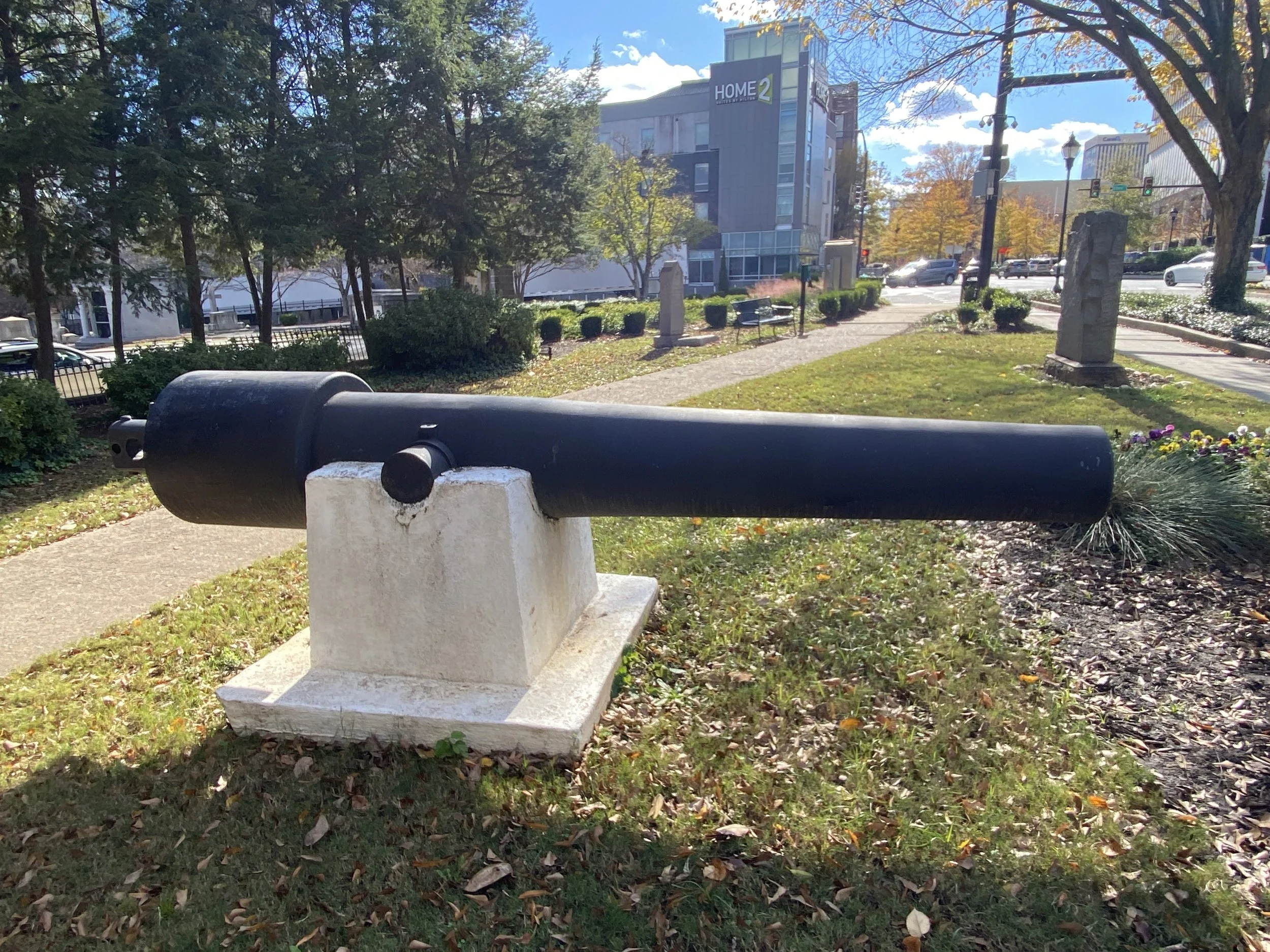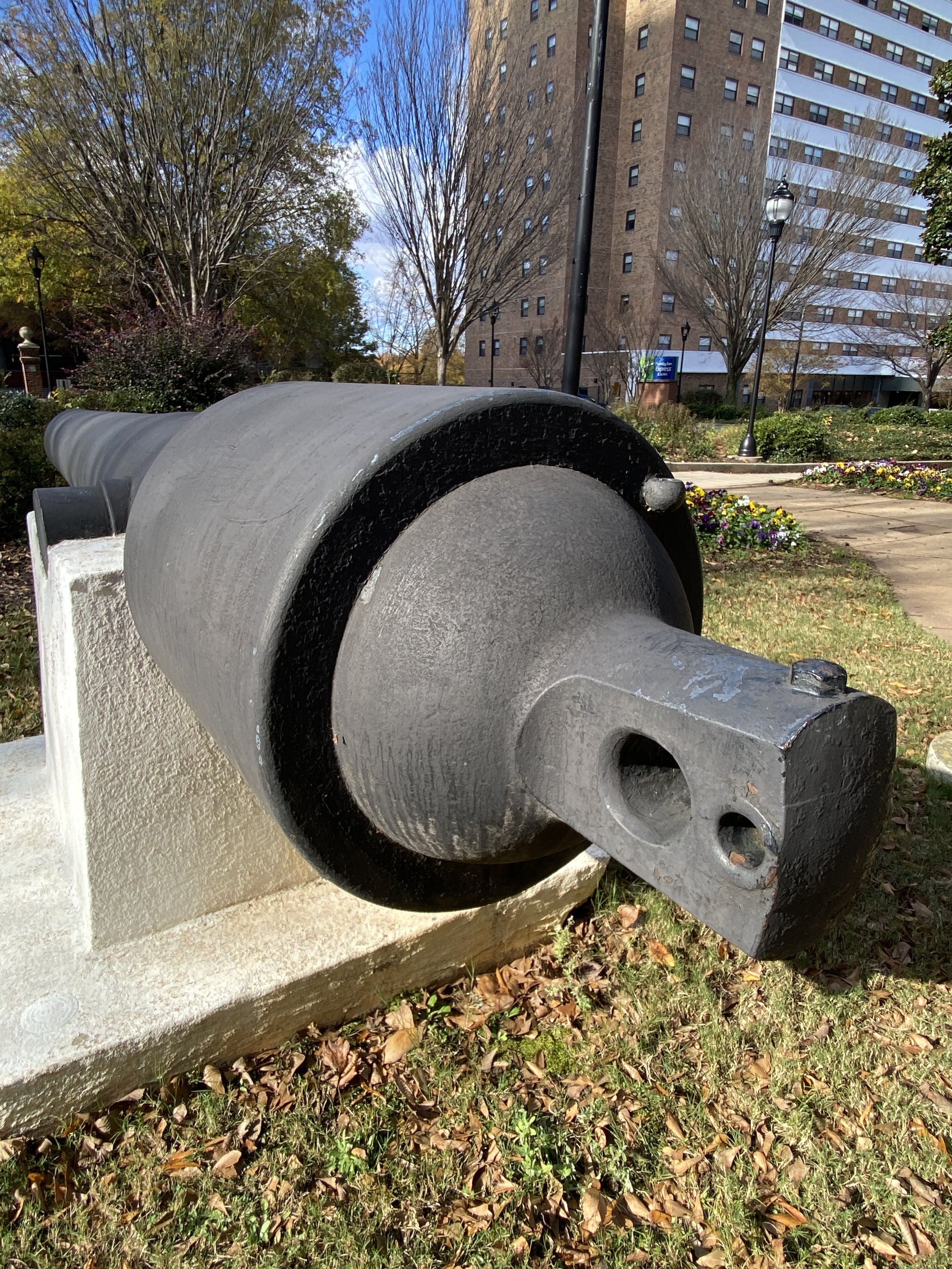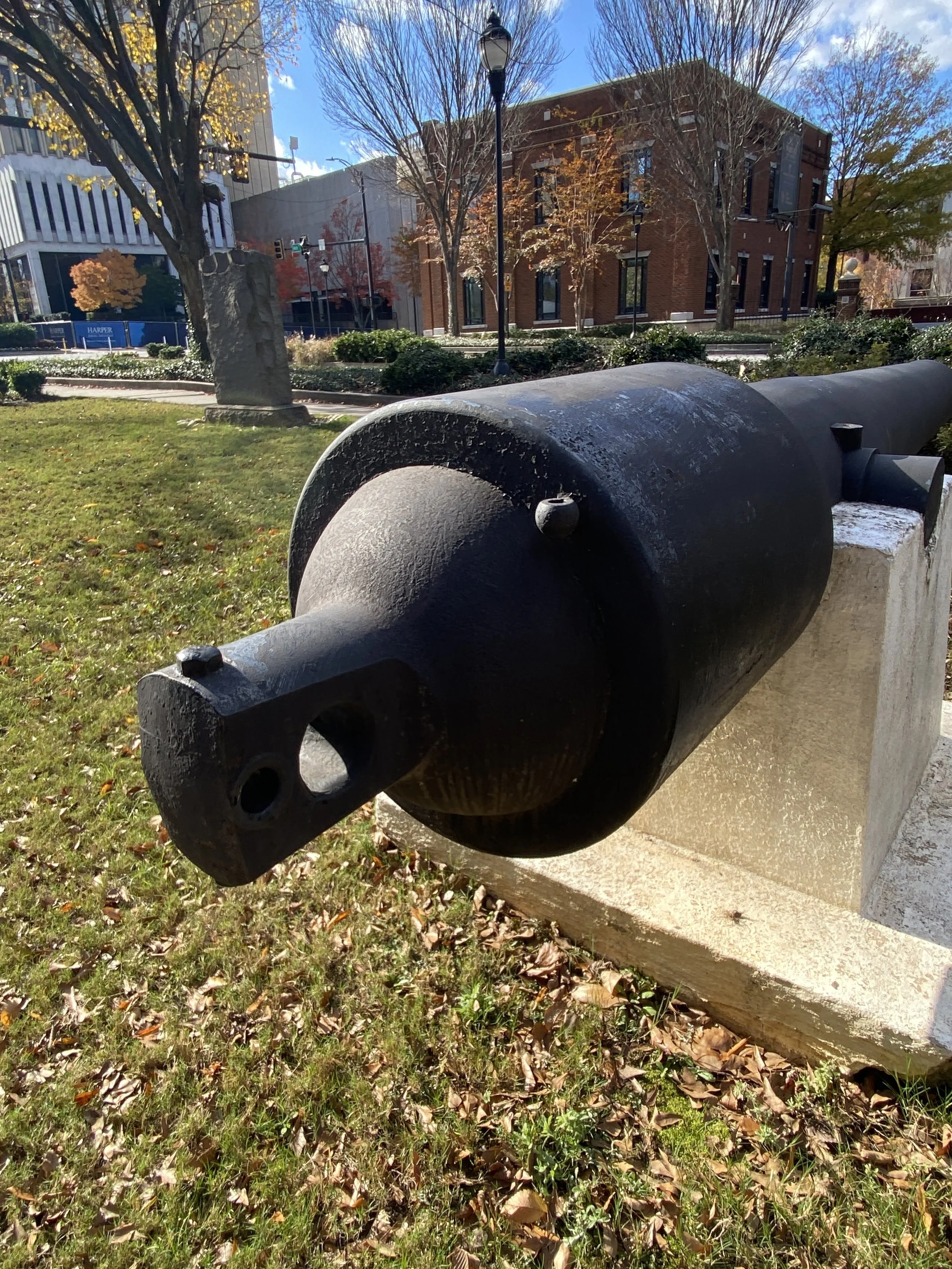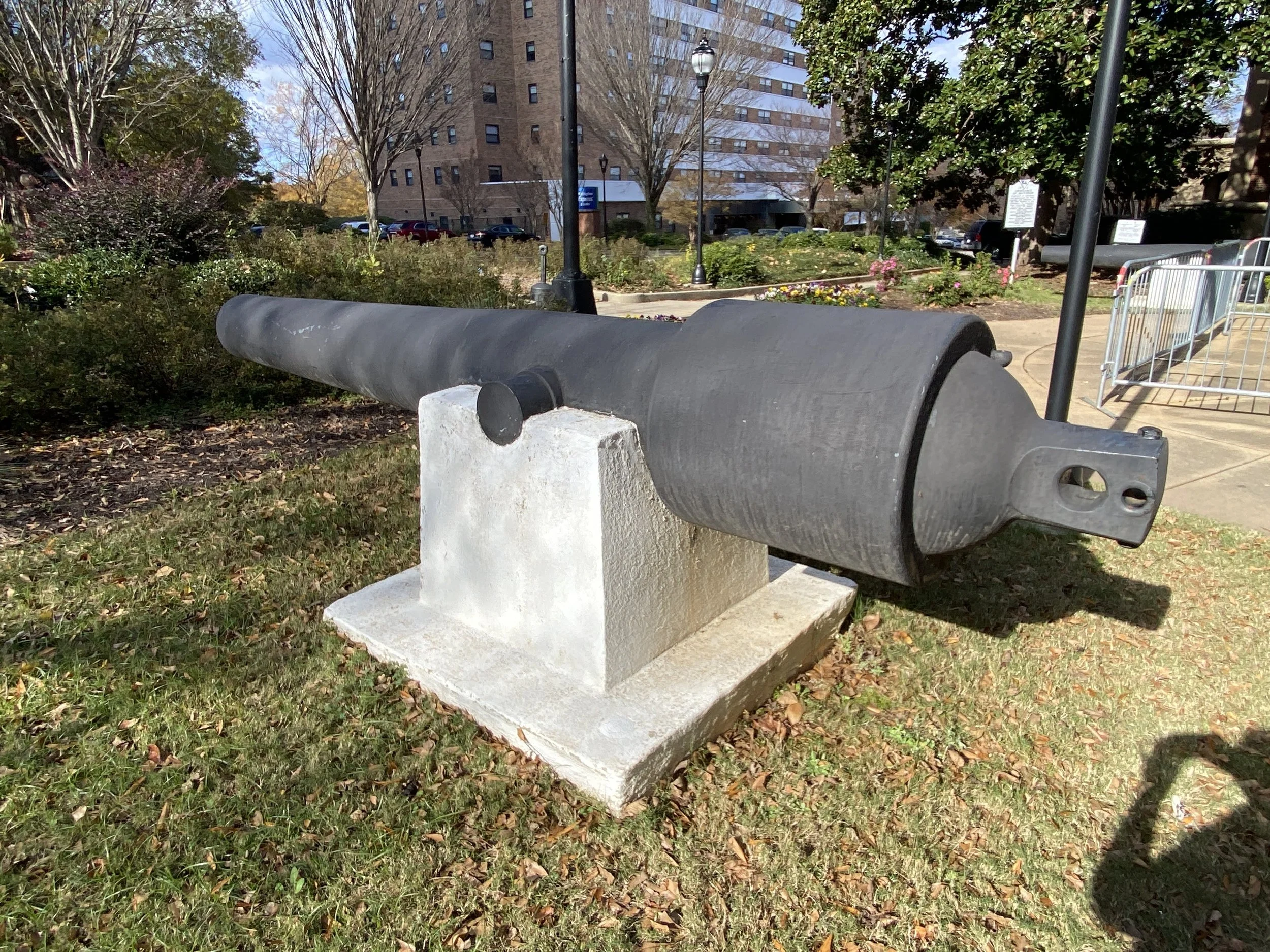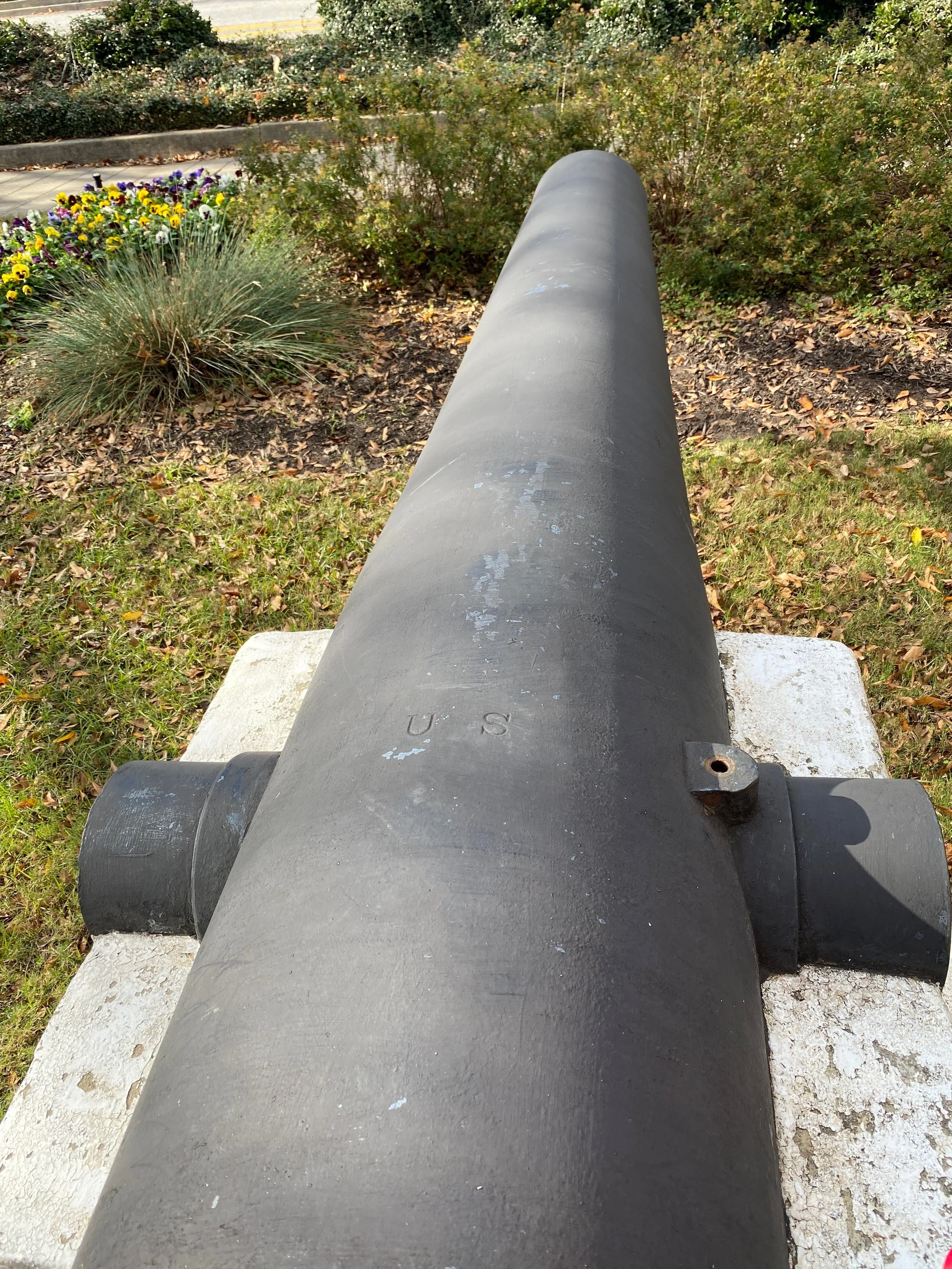The 6.4-Inch Parrott Rifles of Greenville, South Carolina
Two 6.4-Inch (or 100-Pounder) US Army Parrott Rifles are displayed in Greenville, South Carolina. In the foreground is Registry Number 181. In the background is Registry Number 54.
The Parrott Rifles in Greenville, South Carolina: Two US Army 6.4-Inch Parrott Rifles (or 100-Pounder Parrott Rifles) are displayed in Greenville, South Carolina flanking a Confederate Monument outside of but near Springwood Cemetery. The two cannons are:
6.4-Inch Parrott Registry Number 54 manufactured in 1862 at the West Point Foundry. As manufactured it weighed 9,827 pounds.
6.4-Inch Parrott Registry Number 181 manufactured in 1864 at the West Point Foundry. As manufactured it weighed 9,782 pounds.
Parrott Rifles on Morris Island which fired on Fort Sumter and Charleston and its defenses: Though these two cannons are displayed beside a Confederate Monument, they were produced for the US Army, and they may have been used against Confederate forces. Mike Ryan’s excellent paper “The Historic Guns of Forts Sumter and Moultrie” lists all of the Parrott Rifles which burst in action. Ryan notes that 6.4-Inch Parrott Rifles number 51, 52, and 53 burst on Morris Island (page 60). The presence of the three proceeding Parrott Rifles on Morris Island does not mean that Number 54 was on Morris Island, but it is possible that Number 54 was on Morris Island and used in the bombardment of Fort Sumter and other Confederate defenses. Numbers 186, 187, 189, and 190 also burst on Morris Island, and Number 188 is one of the Parrotts mounted at Fort Sumter post-war and which remain at the fort. Again, this does not mean that 181 was on Morris Island, but it is possible.
Ryan notes that the eleven 6.4-Inch Parrott Rifles currently at Fort Sumter were shipped there from the Augusta Arsenal in 1873 It would seem possible that the two Parrotts in Greenville came from the same source. As far as the wartime service of the two Parrotts in Greenville, as Ryan notes of the US Army of the Civil War rarely included serial numbers in reports (pg. 58). I would say of the Greenville Parrotts what Ryan says of Fort Sumter’s Parrotts: it is very possible that these Parrots were “in use somewhere along the south Atlantic - perhaps even on Morris Island during the bombardment of Fort Sumter. Due to a lack of adequate records, though, their use during the Civil War may never be known” (pg. 58)
The Parrott Rifle - an Overview: The Parrott Rifle is a cast-iron cannon which is reinforced at the breech by a band made of wrought iron. The cannon was rifled to improve accuracy. The Parrott Rifle was designed by former US Army Officer Robert Parker Parrott, and all Parrott Rifles were manufactured at the West Point Foundry. Parrott Rifles were manufactured in a variety of calibers: 2.9-Inch (later 3-Inch), 3.67-Inch, 4.2-Inch, 5.3-Inch, 6.4-Inch, 8-Inch, and 10-Inch throwing projectiles from 10 pounds to 300 pounds. As a heavy cannon, the 6.4-Inch Parrott Rifle was generally only used in fixed positions.
A rifled cannon is able to fire an elongated projectile. Whereas a 6.4-Inch smoothbore fired a 32-pound cannonball, the 6.4-Inch Parrott Rifle would fire a projectile weighing 80 to 100 pounds (hence the designation “100-Pounder”).
The Parrott Rifle has a reputation for uneven reliability in service. Rifled cannon were a new and developing technology, but in an investigation of burst cannons conducted by US Navy Ordinance Officers in 1865, it was thought that the cause of many burst Parrotts was actually shells which prematurely detonated in the barrel upon firing. It was also thought that some of the burst Parrotts on Morris Island might have been due to sand entering the barrel and preventing the easy passage of projectiles. Some Parrott Rifles burst early - famously the “Swamp Angel” an 8-Inch Parrott which fired from Morris Island at the City of Charleston burst on its 36th round. On the other hand, 6.4-Inch Number 52 mentioned above burst on its 1,590th round - a fairly impressive performance for an early heavy rifle. Ryan notes about these bursts: “During the bombardments of Fort Sumter from Morris Island there were never more than 22 heavy guns mounted at any one time, yet a remarkable total of 50 Parrotts burst during the siege. Fortunately these accidents caused relatively few casualties, but the time, expense, and effort of replacing these guns were considerable” (Ryan pg. 59)
Sources for this page include:
Olmstead, Edwin, Stark, Wayne E., Tucker, Spencer C. The Big Guns: Civil War Siege, Seacoast, and Naval Cannon. Museum Restoration Service, 1997.
Ripley, Warren, Artillery and Ammunition of the Civil War (4th Edition). The Battery Press, 1984.
Ryan, Mike. “The Historic Guns of Forts Sumter and Moultrie”. National Park Service Article. http://npshistory.com/publications/fosu/guns.pdf
US Army 6.4-Inch Parrott Rifle mounted at Fort Putnam on Morris Island. Library of Congress Photo: https://www.loc.gov/item/2018666881/
US Army 6.4-Inch Parrott Rifles mounted at Battery Rosecrans on Morris Island. The guns were firing on Fort Sumter. Library of Congress Photo: https://www.loc.gov/resource/cwpb.04734/
US Army 6.4-Inch Parrott Rifles at Battery Stevens bombarding Fort Sumter. Library of Congress Photos: https://www.loc.gov/resource/ppmsca.35198/
US Army 6.4-Inch Parrott Rifles mounted at Fort Sumter since 1873 - some of which may have also seen service during the American Civil War to fire on Fort Sumter.
Illustration on Burst 100-Pounder Parrott Number 53 which burst on firing its 152nd round on Morris Island. Illustration from: Gillmore, Quincy Adams. Engineer and Artillery Operations Against the Defenses of Charleston harbor in 1863. D. Van Nostrand, 1865.
